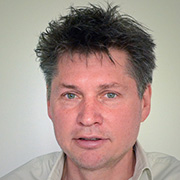A .gov website belongs to an official government organization in the United States.
A lock () or https:// means you've safely connected to the .gov website. Share sensitive information only on official, secure websites.

Stratospheric water vapor (SWV) plays an important role in the radiation budget of the Earth and is also a valuable tracer for understanding the Brewer-Dobson circulation. Meteorological reanalyses provide variables necessary for the modeling of the BDC and of the SWV. However, even recent reanalyses are subject to substantial uncertainties both in terms of the temperature at the tropical tropopause as well in the representation of the stratospheric transport. Especially th SWV provided by the reanalyses manifests in a too fast upward propagation of the stratospheric taperecorder signal.
The main reason for this is an inaccurate representation of stratospheric transport mainly suffering from an excessive numerical diffusion. The Lagrangian view of transport as implemented in the Chemical Lagrangian Model of the Stratosphere (CLaMS) offers an alternative to exploit the numerical diffusion to parametrize physical mixing. The novel concepts of CLaMS will be presented which are mainly based on a consequent use of potential temperature-based coordinates and on implementation of mixing.
As a part of the SPARC Reanalysis Intercomparison Project (SRIP), we investigate simulations over 1980-2013, based on CLaMS driven by three recent reanalyses: ERA-Interim, JRA-55 and MERRA-2. We find that the climatological mean age of air (AoA) significantly depends on the reanalysis, with JRA-55 showing the youngest and MERRA-2 the oldest AoA. On the other hand, reasonable consistency was found in the simulated variability of SWV with respect to the annual cycle and quasi-biennial oscillation. However, the amplitudes of both signals are systematically weaker in the lower and middle stratosphere when CLaMS is driven by MERRA-2. This difference is attributable to relatively slow tropical upwelling in the lower stratosphere based on MERRA-2, which is related to the large long-wave radiative effect and the unique assimilation process in MERRA-2.
The impacts of ENSO and volcanic aerosol on SWV entry variability are qualitatively consistent among the three simulations despite differences of 50-100% in the magnitudes. Long-term SWV trends show large discrepancies among the three simulations. Finally, we also compare our results with the newest CLaMS simulation driven by the ECMWF's next-generation reanalysis ERA-5.
Paul Konopka is a Senior Scientist in the Institute for Energy and Climate Research - Stratosphere at Forschungszentrum Jülich in Germany. His research focuses on transport and mixing in the atmosphere, and he is a lead developer of the Chemistry Lagrangian Model for the Stratosphere (CLaMS).
ALL Seminar attendees agree not to cite, quote, copy, or distribute material presented without the explicit written consent of the seminar presenter. Any opinions expressed in this seminar are those of the speaker alone and do not necessarily reflect the opinions of NOAA or CSL.